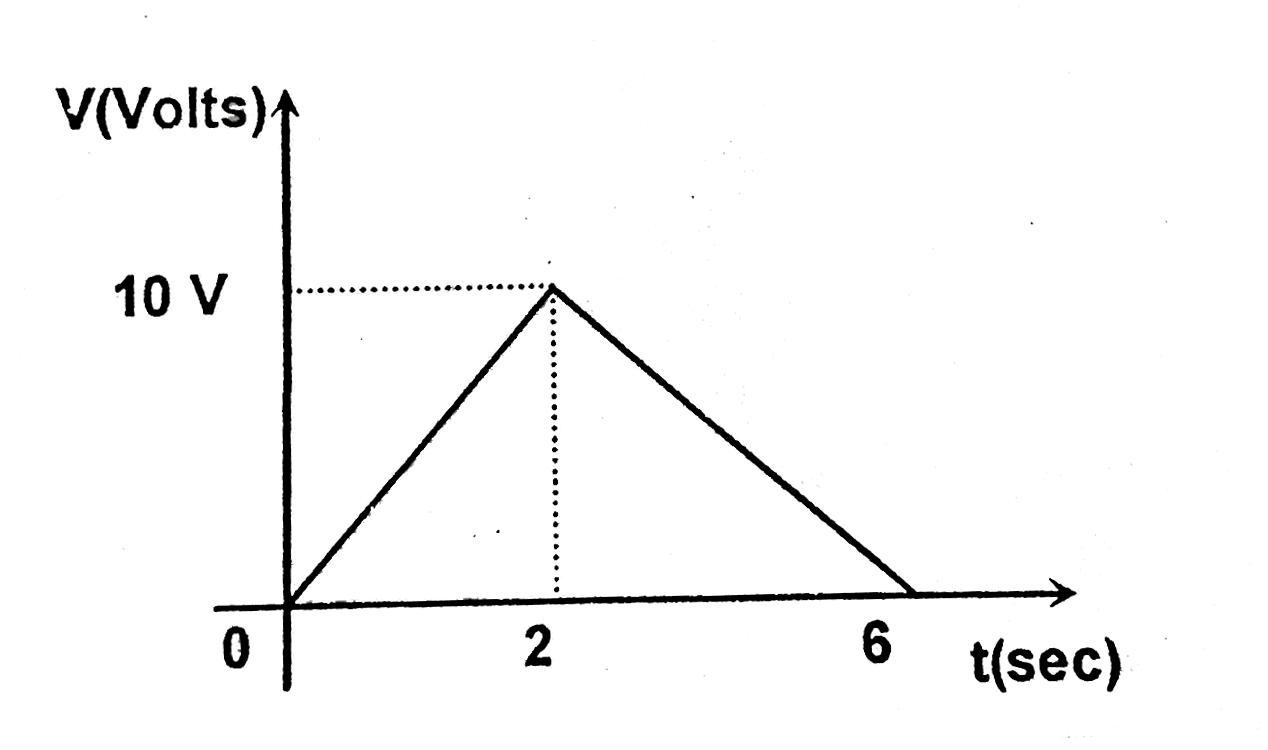Potential difference that is applied across a conductor of resistance .R. varies with time .t. according to the equation V(t)=V0e−t/z where z is a constant that has dimonsions of time. Obviously, the applied potential difference decreases exponentially with time. Charge that passes through any fixed observation point within the conductor between t=0 and t=z will be
V0R
0.368V0R
0.632V0zR
0.368V0zR
The correct Answer is:C
Step by step video & image solution for Potential difference that is applied across a conductor of resistance .R. varies with time .t. according to the equation V(t)=V_(0)e^(-t//z) where z is a constant that has dimonsions of time. Obviously, the applied potential difference decreases exponentially with time. Charge that passes through any fixed observation point within the conductor between t=0 and t=z will be by Physics experts to help you in doubts & scoring excellent marks in Class 12 exams.
Updated on:21/07/2023Topper's Solved these Questions
- CURRENT ELECTRICITYBOOK - AAKASH SERIESCHAPTER - CURRENT ELECTRICITYEXERCISE - LECTURE SHEET (EXERCISE-I LEVEL- II (ADVANCED) (More than one correct answer type Questions))
3 Videos
- CURRENT ELECTRICITYBOOK - AAKASH SERIESCHAPTER - CURRENT ELECTRICITYEXERCISE - LECTURE SHEET (EXERCISE- II LEVEL-I (MAIN) (Straight Objective Type Questions))
14 Videos
- CURRENT ELECTRICITYBOOK - AAKASH SERIESCHAPTER - CURRENT ELECTRICITYEXERCISE - EXERCISE - IA
2 Videos
- CURRENT ELECTRICITYBOOK - AAKASH SERIESCHAPTER - CURRENT ELECTRICITYEXERCISE - PROBLEMS (LEVEL-II)
27 Videos
- DUAL NATURE OF RADIATION AND MATTERBOOK - AAKASH SERIESCHAPTER - DUAL NATURE OF RADIATION AND MATTEREXERCISE - PRACTICE EXERCISEX
42 Videos
Similar Questions
A potential difference of 10 V is applied across a conductor of resistance 1kΩ. Find the number of electrons flowing through the conductor in 5 minutes.
View SolutionThe voltage of an AC source varies with time according to the equation,V=100sin100πIcos100πt.Where t is in second and V is in volt.Then:
View Solution
Knowledge Check
The charge flowing through a resistance R varies with time t as Q=at−bt2. The total heat produced in R is
Aa3RbBa3R2bCa3R3bDa3R6bThe position of particle at time t is given by, x(t)=(v0/∝)(1−e−ut) where v0 is a constant ∝>0. The dimension of v0 and ∝ are,
AM0LT−1andT−1BM0LT0andT−1CM0LT−1andLT−2DM0LT−1andT
The position of a particle at time t is given by the equation x(t)=V0A(1−eAt)
V0 = constant and A > 0
Dimensions of V0 and A respectively are
View SolutionThe potential difference across a 10H inductor as a function of time is shown in the figure. At t=0 current is zero. Then

View SolutionWhen some potential difference V is applied across a resistance R then the work by the electrical field on the charge q to flow through the circuit in time t will be
View SolutionA particle starts moving rectilinearly at time t=0 such that its velocity v changes with time t according to the equation v=t2−t, where t is in seconds and v in s−1. Find the time interval for which the particle retards.
View SolutionThe position of a particle at time t is given by the relation x(t)=(v0α)(1−c−at), where v0 is a constant and α>0. Find the dimensions of v0andα.
View SolutionThe position of a particle at time t is given by the relation x(t)=(v0α)(1−c−at), where v0 is a constant and α>0. Find the dimensions of v0andα.
View Solution
